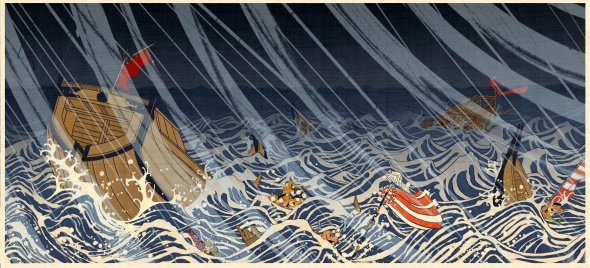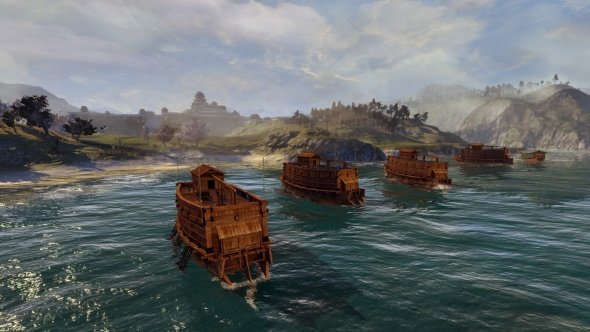Shogun 2: Total War preview - The master returns
So Creative Assembly are aware of the problem, and they're working on it, aided by the fact that Shogun 2's melee units are easier to simulate. “It's one of our key objectives to make sure that no one ever mentions AI ever again in a bad light, because we've had enough of that,” says Mike. He sounds very, very determined. I'm a bit scared.
There have been six Total War games so far, and it's easy to see the building blocks that make up the series: the campaign map, the battles, the naval battles since Empire, and the multiplayer. What becomes clear when you talk to the designers is how none of these things are taken for granted. They are reconsidered in full each time out, and morph to support each new game's setting.

Case in point: the naval battles. It was an essential addition to Empire's global colonial war, but it felt like Creative Assembly had difficulty giving it the depth and fun of the land battles. Far from jaunty piratical adventures, sea skirmishes were about two, slow-turning galleons lobbing cannonballs across a featureless ocean.
Japanese naval warfare of the Shogun 2 period was a very different thing. It turns out the medieval Japanese were game designers in waiting.
“In European naval wars, it's really about who has the bigger gun platform,” explains Russell. “What we're excited about in Japanese naval battles is that we can put in a lot more of the stone, scissors, paper gameplay where certain ships are better against other types of ships.”
Japanese ships typically fell into two categories: sheds on water, and castles on water. The shed-boats were small platforms carrying groups of soldiers. Those passengers could use the platform to pull alongside enemy ships and board them with swords, fire arrows from a distance, and watch the golf without being bothered by the kids. The castleboats were bigger platforms capable of carrying more people, but essentially the same.

“There's a mixture of ranged combat and close combat,” extends Ferguson. “There's also terrain.” Naval battles in Japan were fought near the coastline, meaning Shogun 2's new fights will provide much a needed frame of reference for steering players.
The biggest gaming news, reviews and hardware deals
Keep up to date with the most important stories and the best deals, as picked by the PC Gamer team.
The land also provides new tactical opportunities: you can position your boats on the other side of an island to give them cover, or place them between coastlines to block your enemy's passage.
“It makes the naval battles more similar to land battles in terms of the tactics you can use,” says Mike. There's one last major change that makes that even more true. “These ships are mostly oar powered.”
What made Empire's naval battles awkward was that you were constantly moving, the wind driving you in grand, sweeping arcs around your foes. Not so with oars. You can tell your boat where to go, and it will go there, and then stop. “You couldn't do anything remotely like that in an Empire naval battle, so it completely changes it.”
But still the most obvious area Total War must change in each iteration is in its campaign map. Empire's global scale required separate theatres. Napoleon: Total War added the attrition and supply lines that stymied the real Bonaparte across his four military campaigns. In the words of Mike Simpson: “Japan is just Japan. It's even a nice shape for scrolling across; long and thin.”

